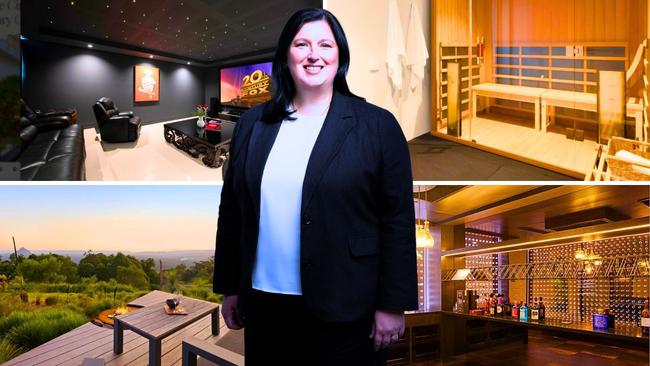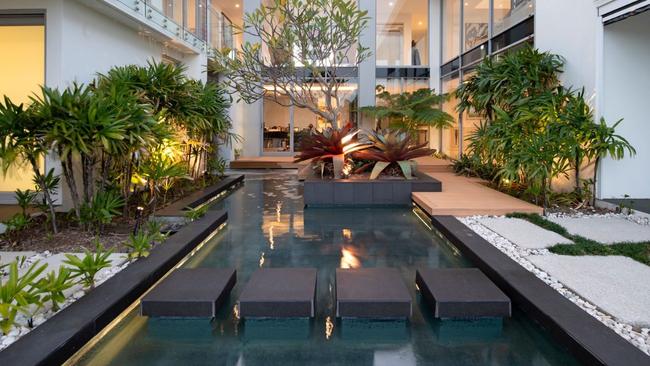Hyperbaric chambers, yoga rooms nature walls now Aussie luxury musts
Real estate is booming in Australia thanks to one new trend – here’s how to cash in.

QLD News
Don't miss out on the headlines from QLD News. Followed categories will be added to My News.
For today’s home buyers, luxury is no longer just about status — it’s about sanctuary and that starts at home with demand for wellness wings, rooftop retreat zones, in-house smart air and water purification, circadian lighting, and electromagnetic fields to create serenity.
Luxury real estate in Australia is undergoing a transformation, with wellness no longer just a buzzword but a defining feature of high-end homes.
From private spas and plunge pools to hyperbaric oxygen chambers and bedrooms designed to minimise exposure to electromagnetic fields, wellness-focused living is rapidly becoming the gold standard for discerning buyers.
A report on real estate luxury living, out last week, revealed wellness features have shifted from optional extras to core elements in the luxury market.
Ray White group head of research Vanessa Rader said the pandemic played a pivotal role in the evolution, heightening awareness of how living spaces support physical and mental wellbeing.

Ms Rader said Australia was uniquely positioned to lead the global wellness real estate trend, thanks to its favourable climate, natural landscapes, and strong tradition of outdoor living.
“The expectations have shifted from passive luxury to active wellness,” Ms Rader said.
“Buyers want homes that not only impress guests but also support their daily health routines, from morning workouts to evening relaxation rituals.
“From coastal developments with saltwater pools and walking tracks, to urban towers offering five-star spa amenities, wellness is reshaping luxury,” she said.
Globally, wellness real estate is booming.
The Global Wellness Institute estimates the sector grew from $438 billion in 2023 to a projected $913 billion by 2028.
It said Australia ranked fourth in the world for wellness real estate, with the broader wellness economy now accounting for 7.27 per cent of GDP.
Australia also placed tenth globally in the size of its overall wellness economy and seventh in per capita wellness spending with an estimated $4824 spent per person.

Since 2019, nearly a third of the country’s wellness market growth has come from real estate, making it one of the fastest-growing segments in the sector.
Ms Rader said common features now included in luxury homes included dedicated wellness zones.
Spas with steam rooms, infra-red saunas, hot and cold plunge pools, magnesium baths, massage and treatment rooms, and yoga studios with acoustic design.
Designs that feature “biophilic elements” which incorporate nature or natural references to enhance human wellbeing include indoor gardens, living walls of plants, and water features that purify air and reduce stress.
Hi-tech health systems, including smart air and water purification, circadian lighting, and electromagnetic fields technologies, are also being used to create low-radiation rest environments.
Personalised performance spaces such as hyperbaric oxygen chambers, private gyms with virtual coaching, and AI-driven wellness monitoring systems are also being included in the homes of the rich and famous.

These homes offer more than opulence and offer rejuvenation, stress relief, and performance optimisation, directly at home.
Properties with built-in wellness infrastructure often command 10–25 per cent higher prices than comparable homes without such features.
Developers are responding to the demand, with new projects in Sydney, Melbourne, and Brisbane, now including entire wellness wings, rooftop retreat zones, and in-house nutritionists or fitness coaches.
In regional areas, luxury homes in Byron Bay, Margaret River and the Mornington Peninsula are embracing the trend too maximising natural settings with designs that bring the outdoors in.
As technology and health awareness continue to advance, wellness features will only become more integrated — and expected.
Future innovations may include AI-powered home health analysis, real-time air and hydration monitoring, and even emotion-sensitive lighting.
More Coverage
Originally published as Hyperbaric chambers, yoga rooms nature walls now Aussie luxury musts





